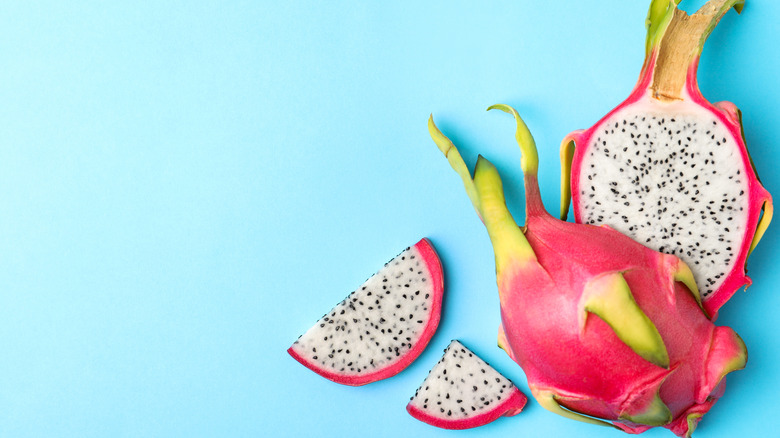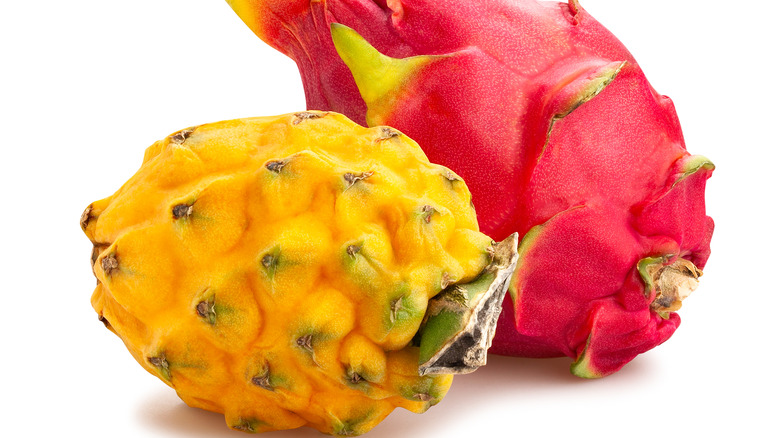Are Pitaya And Dragon Fruit The Same Thing?
If you've ever eaten or seen a dragon fruit, it's sure to have stuck in your mind. The fruit's magenta pink exterior with green spikes and its bright white flesh speckled with black seeds certainly make it memorable. You may have also noticed that the striking fruit has more than one moniker.
According to Spoon University, pitaya is the traditional name for the flashy fruit. The pitaya has its origins in South and Central America, Spoon University reports, but it is now grown worldwide. The fruit has a particularly large market in areas like Malaysia and Vietnam. So what's with the double name? Well, even though pitaya was the fruit's first name, dragon fruit is now the more common way of referring to it. Both names remain correct though, Spoon University notes. The dragon fruit is actually a product of a cactus. Pitaya is popular in smoothies and smoothie bowls, desserts, cocktails, or just to munch on its own.
What does dragon fruit/pitaya taste like?
As far as flavor goes, this tropical fruit packs a punch of sweetness. Dragon fruit has been described as having flavor that is similar to pears, watermelon, or kiwi. The black seeds speckled throughout the fruit's soft white interior give it the same texture as a kiwi, but its sweetness makes the flavor closer to a pear or a watermelon.
This oval-shaped fruit has multiple varieties. The Hylocereus undatus varietal is the most common, but other species of the fruit offer variations in the size, sweetness, and even color of the dragon fruit. The rarest variety, Selenicereus megalanthus, is a small, sweet presentation of the dragon fruit and has yellow skin as opposed to the more common magenta (via Spicy Exotics).
So no matter what you call it, dragon fruit or pitaya, the fruit — and flavor — is the same.

